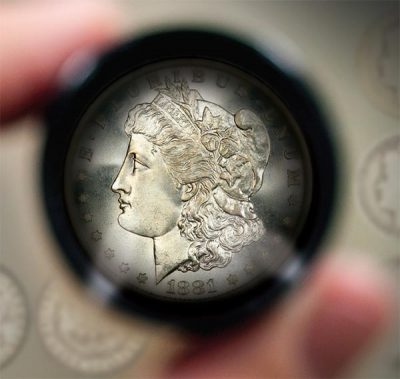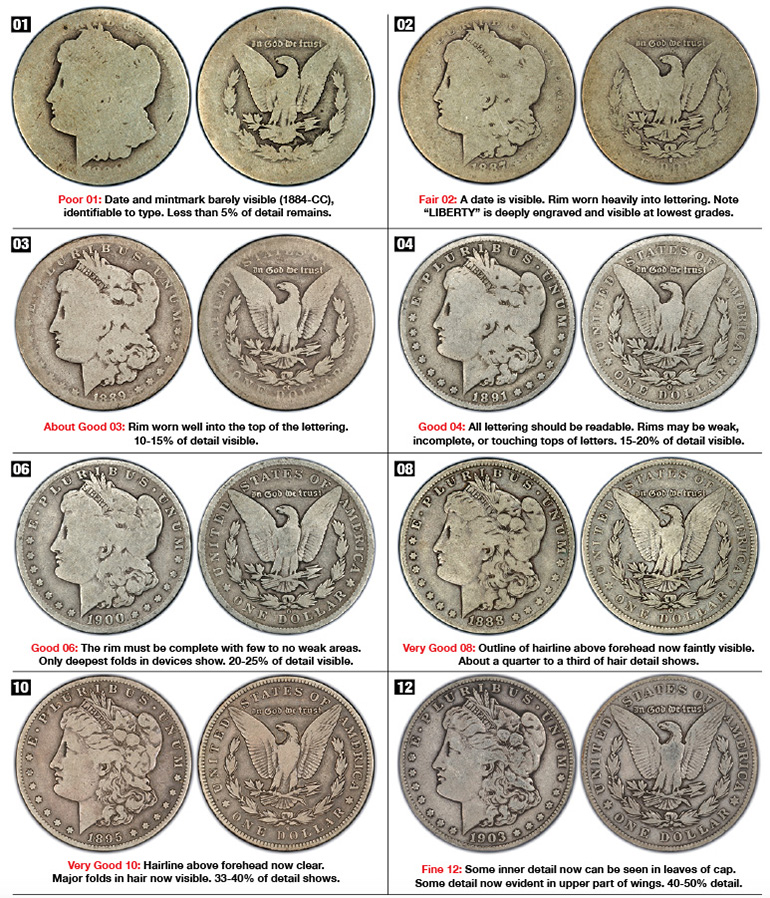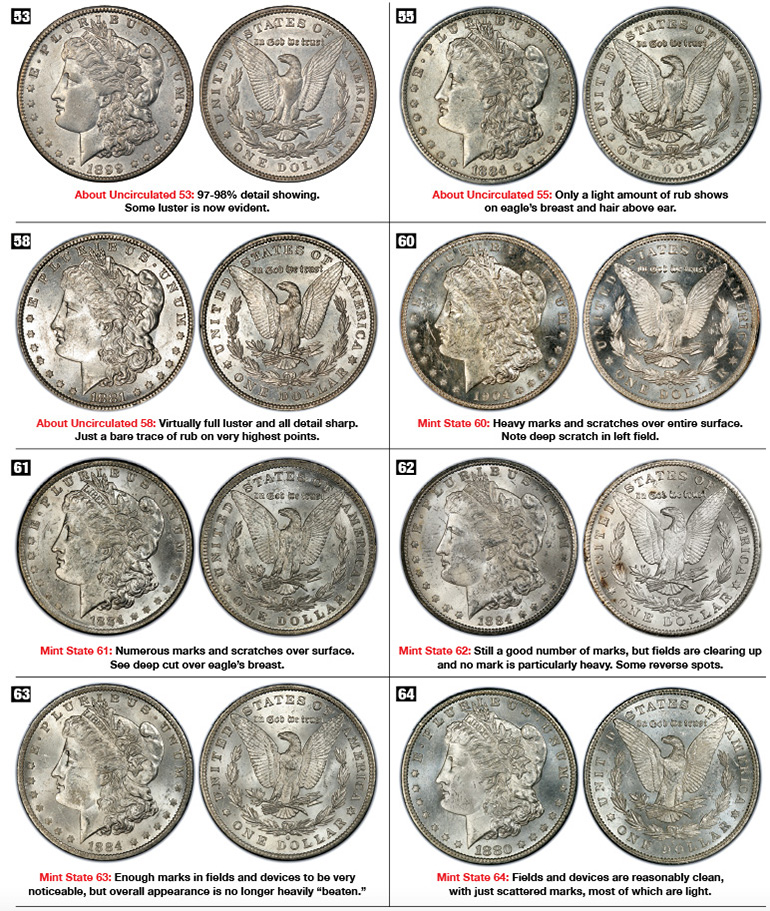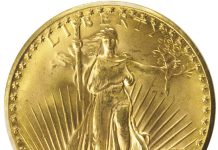
By Michael W. Sherman
Images courtesy Professional Coin Grading Service
For the past 50 years or so, one of the most popular series among U.S. numismatists has been the Morgan silver dollar. Struck between 1878 and 1904 (with a final issue in 1921), Morgan dollars have achieved their popularity due to their large size, attractive design, and widespread availability in Mint State grades at relatively low cost (for common dates). Large quantities of Morgan dollars were stored by the Treasury Department for many years, so today’s collector can acquire a near Gem example of a 120-140 year old coin for less than $100. Some Morgan dollars circulated heavily (particularly in the western states) so Morgans are found in nearly all grades from Poor 01 through Superb Gem Mint State 68.
Grading Morgan dollars is not particularly difficult because they are large, struck in silver, and conventionally designed with relatively few striking anomalies. There are a few issues (such as some weak strikes from the New Orleans Mint in the late-1880s and 1890s) but in general, most Morgan dollars were well struck and fairly uniform in appearance when they left the mint. However, in the intervening century, quite a bit has happened to them including transportation and storage in bags, time in circulation, and more recently, handling (and some mishandling) by dealers and collectors.
In lower circulated grades up to about VF-20, the focus is generally on what is visible on the coin. In grades of Poor-01 and Fair-02, a readable date and mintmark is a must. From AG-03 through Good-06, the focus is mainly on the rim. It will be worn well into the letters on an AG-03, perhaps just touching the tops of the letters in Good-04, and by Good-06, the rim should be full. In the grades of VG-08 and -10, and Fine-12 and -15, the major elements in the design such as the hairline around the forehead and in front of the ear become visible. The feathers on the back of the eagle’s wing also gain internal detail.
Above VF-20, the focus shifts to what is missing rather that what is present. Points of wear in the upper grades are naturally the high points of the design, and flatness on the hair directly above the ear and on the eagle’s breast are the areas to look for. By AU-53 or -55, some luster in the protected areas may be found, and by AU-58, there should be considerable luster on the coin.
Mint State grades are largely determined by the preservation of the coin’s surface. Because Morgan dollars are large and heavy, they are quite vulnerable to bag marks. Years of handling and movement in bags have taken their toll, and many Mint State examples today show a fair amount of contact marks from hitting and scraping against other coins in the bag. Most heavily bag-marked Morgans would grade in the MS-60-62 range. MS-63s and -64s will show some marks, but none should be particularly heavy or distracting. By the time you get to MS-65 and -66, the coin should be quite clean, with only a few light marks in the fields or on the cheek. The elusive MS-67s and -68s are superb examples, with only a few trivial marks in out-of-the-way places. The left obverse field and cheek of Liberty should be nearly free of marks in the highest grades, as those are the areas to which the eye is first drawn.
PCGS assigns two qualifiers to Mint State Morgan dollars: Prooflike and Deep Mirror Prooflike. These coins were struck from freshly or heavily polished dies and constitute a relatively small portion of all Morgan dollars. They are highly prized by collectors due to their reflective fields.
Morgan dollar reverses almost always appear nicer than the obverse due to the dynamics of the design. There is not quite as much open field area, and the eagle tends to hide marks better than Liberty’s cheek. At least two-thirds of the grading weight is generally given to the obverse on a Morgan dollar.
Learning to grade Morgan dollars is easier than for many series due to their widespread availability in Mint State grades. Just go to a coin show and look in dealers’ cases, and you can see lots of examples that should provide a great education.
Want to receive COINage magazine in your mailbox or inbox? Subscribe today!













